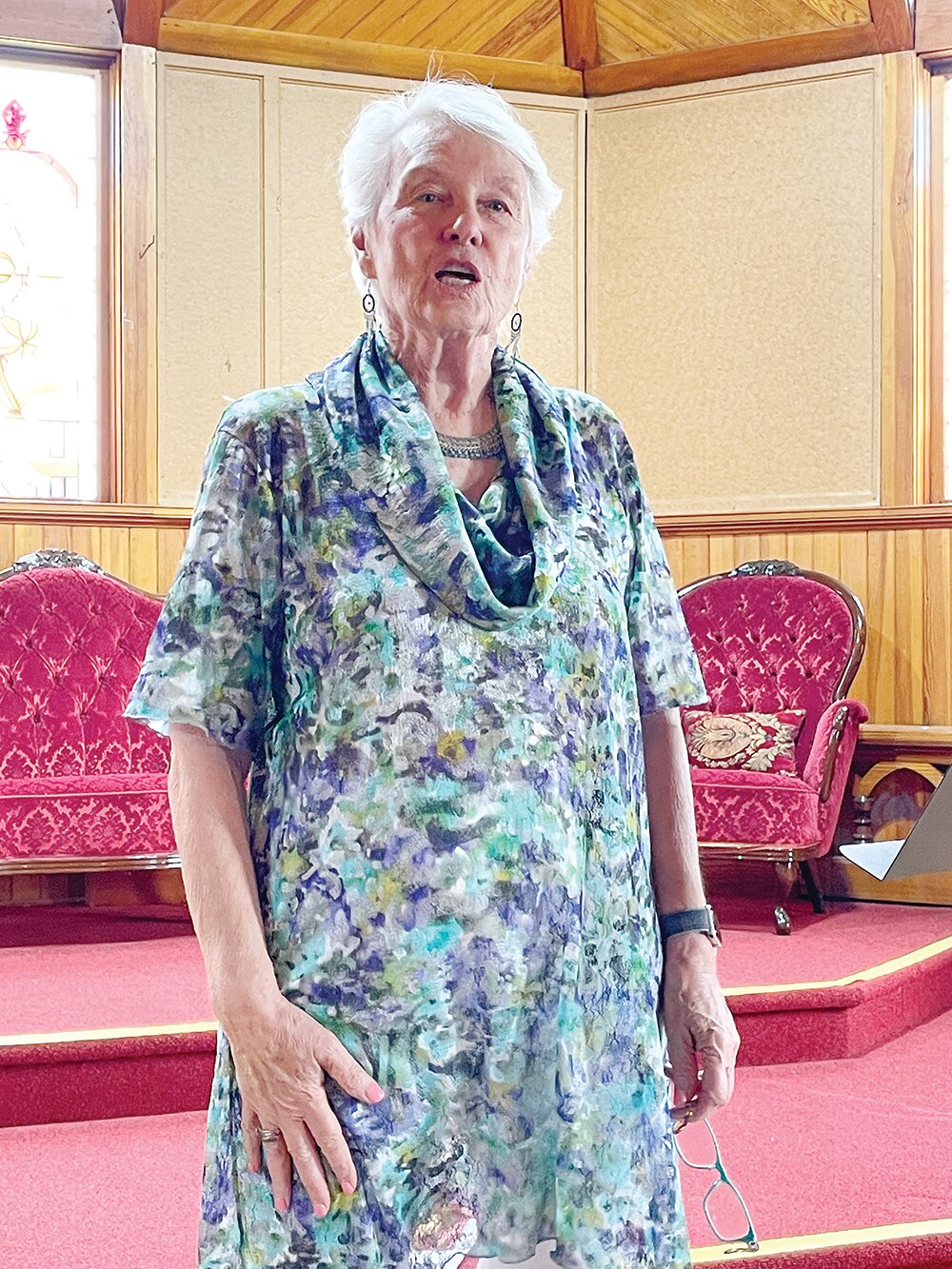Support the Timberjay by making a donation.
Learning about life “down under”
TOWER- Jan and David Munzberg came all the way from Aldinga Beach, South Australia, to speak to an event held at the Lake Vermilion Cultural Center earlier this month. But the retired educators have …
This item is available in full to subscribers.
Attention subscribers
To continue reading, you will need to either log in to your subscriber account, or purchase a new subscription.
If you are a current print subscriber, you can set up a free website account and connect your subscription to it by clicking here.
If you are a digital subscriber with an active, online-only subscription then you already have an account here. Just reset your password if you've not yet logged in to your account on this new site.
Otherwise, click here to view your options for subscribing.
Please log in to continue |
Learning about life “down under”
TOWER- Jan and David Munzberg came all the way from Aldinga Beach, South Australia, to speak to an event held at the Lake Vermilion Cultural Center earlier this month. But the retired educators have strong ties to northern Minnesota, as well as to LVCC President Mary Batinich. Jan’s mother was a public health nurse who befriended Mary’s mother, a teacher, in Bigfork, the small rural town north of Grand Rapids.
After a few stories about life in that small town, Jan spoke of her time as a teacher, and how she and her first husband, and two young children, ended up teaching in Australia as part of a two-year teaching program in 1972. Australia was suffering a teacher shortage and brought in teachers for two-year terms, with the option to remain if desired.
“We decided to stay,” she said. “I’ve been there 50 years.”
“I had a wonderful life as a teacher,” she said. “Third grade was my favorite age to teach.”
Jan touched on differences in the educational systems in the two countries. In Australia, teachers don’t use textbooks, and teachers will stay with the same cohort of students as they move from their first to third year of formal schooling.
“It is such a wonderful thing for a teacher,” she said, adding that she is still in touch with some of her former students.
After years in the classroom, Jan moved into leadership roles, finishing her career as a principal of an elementary school that served children in grades one through three.
“I thought I had the best job. I got to work with the children, their parents, the teachers, and the wider community,” she said.
But in 1994, both she and her second husband, David, also a school principal, took early retirement, and they both embarked on second careers in the creative sector.
Dan, a native Australian, grew up on a farm near Adelaide, in South Australia. The area is known for its grape-growing and vineyards, and his family farm grew grapes and raised poultry.
“My heritage is German,” he said, and talked about a wave of German immigration to Australia in the 1800s, as Lutherans fled from compulsory military service.
“Within a few years there were nine different Lutheran Synods there,” he said.
South Australia wasn’t settled as a penal colony as was the rest of the country, he noted. Initial business enterprises mostly went bust, he said, but then high-grade copper ore was discovered, and the area grew.
Growing up, Dan always assumed he would stay on the farm, but the farm was passed onto his older brother.
“I literally fell into teaching,” he said. “And I loved it.” His first job was at a remote outpost, only reachable on a rural railroad line.
“I was 20 years old,” he said. “I had 36 students, no telephone, no electricity.” Students were mostly from families of the men working on the railroad. He spent two years there, then moved on to different areas.
He noted that male teachers were usually the only ones promoted to leadership and principal positions in schools because these jobs were not deemed suitable for female teachers who were married. This practice didn’t change until the early 1970s, he said.
He met Jan while they were both principals and working on projects and conducting workshops aimed at updating school culture.
“When I started teaching, they issued me a cane, and I was supposed to keep track of how many children I punished,” he said. “But I didn’t believe in hitting kids.”
Dan worked to educate more teachers and schools on non-punitive measures, such as logical consequences, as well as working with parents to give them more non-violent tools for addressing problem behaviors at home.
“Successful schools are true communities of students, staff, and parents,” he said. “Being a school principal is like conducting an orchestra.”
The two married, and about ten years later both traveled to British Columbia on a teacher exchange program. Shortly after returning to Australia, Dan was offered early retirement at the age of 49.
He was already an accomplished builder, having designed and constructed the home their family lived in.
“I started making furniture for our home,” he said, a hobby that has turned into his second career of crafting custom free-standing furniture.
“I’m obsessed with woodworking,” he said. “I’ve had two creative endeavors, and both are quite different.”
Shortly after Dan took early retirement, Jan also took that leap.
“There is just so much to do,” she said. Adding to her teaching resume has been the publication of two family histories (one for both sides of her family), a cookbook she co-wrote with her daughter, quilting, sewing, card-making, and renting out a small cottage in their backyard.
The two have been traveling back to the United States every summer for at least the last 30 years, visiting their children and other relatives of Jan’s, as well as the Grand Rapids and Lake Vermilion areas.
The two first learned about the Lake Vermilion Cultural Center project before St. Mary’s Church was moved to its current location on Main Street.
“I really have to congratulate Mary and the LVCC board and volunteers,” he said. “This is a very courageous project. I am glad to be a part of it.”
The two have provided financial and other support for the project over the years. A quilt featuring Australian animals is now on display in the lobby of the building, and LVCC is taking bids on the beautiful, original quilt as part of their ongoing fundraising efforts.
After the program, the audience was treated to ice cream and a selection of homemade pies from LVCC board member Shelby Vaske, as well as raffle drawings for some other handmade items donated by the Munzbergs.
LVCC board chair Elaine McGillivray talked about the ongoing research they are doing on the history of St. Mary’s, which was built in 1889.
“We have been trying to make the link to Cass Gilbert,” she said. Gilbert is a famous American architect who started his career designing many small churches in the state, including some on the Iron Range during the same time-period. He went on to design the United States Supreme Court building, and the Minnesota State Capitol building in St. Paul.
The design of St. Mary’s is very close to the design of some of his other church buildings, but so far, LVCC researchers have been unable to find any original materials definitively linking him to the building.









